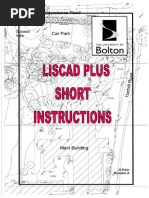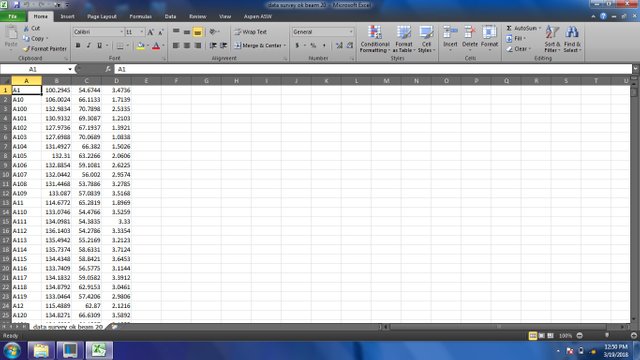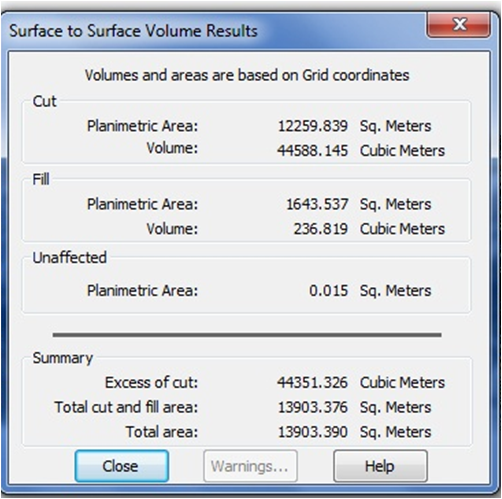Below you will find a selection of the technical information and manuals from my archives. I have grouped them for easy locating.
These documents are in several different languages, indicated in parenthesis.
EN: English language
DE: German language
NL: Dutch language
SP: Spanish language

1 LISCAD ePlan Manual Version 2019 Introduction To ePlan ePlan is a national initiative spearheaded by the Intergovernmental Committee on Surveying and Mapping (ICSM) to replace the existing paper and PDF plans of subdivision with a new electronic file format (ePlan). This enables the computerisation and automation of many industry and government. For surveyors and engineers alike, LISCAD helps make your work easier, faster and more efficient. Available modules include: Input and Output - transfer data to and from total station, data logger, GPS and digital level field surveying devices, as well as software systems including. Getting LISCAD 2020. LISCAD licences that are on LISTECH Cover or have a Leica Geosystems Customer Care Package (CCP) with an expiry date of 1 January 2020 or later, can download, install and run LISCAD 2020 via the downloads section of the LISCAD product page. To find out more about LISTECH Cover visit the LISTECH Cover page or request a quotation on the LISTECH Cover Quote page. LEICA LISCAD CAD The final part of the jigsaw, LISCAD CAD generates your final plan. A whole CAD package that is specifi-cally tailored towards surveying and map-ping, LISCAD CAD contains many advan-ced features such as multiple window display of the same. 4 LISCAD ePlan Manual Version 2019 The above figure shows a Lookup Table which maps features with code ‘S’ to ‘EB’ (Existing Boundary) once the LISCAD drawing file is converted to ePlan. NOTE 1: Lookup Table does not change the codes in the diagram. NOTE 2: There must be a one-to-one relationship between the surveyor’s codes and ePlan.
Wild user manuals, from scanned originals:
Leica user manuals:
Leica technical information:
This 'GSI Online' manual explains all details about how to remotely control the several TPS series of instruments. Using this information measurment data can be retrieved from internal memory, stakeout data can be transfered to the instrument and motorized instruments can be controled to point to targets, start measurements, etc.
The manual dates from 2008 and covers all TPS series up to the FlexLine series, plus the DNA digital level.
Disto technical information:
The Disto series of hand distance meters is generally much more powerful than the general public expects.
A special version has been manufactured for some time to prove its power to potential OEM customers.
This 'Disto OEM Module' did not sport a user interface or buttons, but had to be controlled from remote over a serial (RS232) connection.
The technical manual discusses this unit in full detail, while the Disto Online Manual describes all different commands.
This command set is available even in the latest Disto units of today, but obviously only the models with Bluetooth can be accessed and controlled this way.
Technical information connecting Leica to Trimble TSC1:
The following data sheets show the information in pictures, so the actual language is not so important.
Technical information from the Dutch Kadaster in relation to Liscad:
The documents below can prove usefull while processing with Liscad and for setting the configuration of for instance the SUF2/NEN1878 convertor for Liscad.
(This functionality is available with the Input / Output module)
Imports data from Leica DBX. The instruments utilising Leica DBX include the System 1200, Viva and Nova.
Liscad Manual
The data imported may consists of:
- Geometry (includes points, straight lines, and areas as polygons)
- Images
- Point Cloud Scans
Point, line and polygon codes associated with the geometry objects to be imported are used.
Refer also to the Import dialog box topic.
This instruments use Compact Flash (CF) cards to store the data.
To transfer between Leica DBX and the system, you must have a CF card drive installed in or connected to your computer, and the appropriate device drivers already loaded. Refer to your CF card drive manual for details of these drivers.
The import operation transfers the data from the selected Leica database on the CF card in that drive.
Sample code lists for use on the Leica DBX instruments are available from the LISCAD User Folder. You may also create, edit and upload alternative code lists using Leica Geo Office to suit your particular needs.
Notes and Import Rules:
The Leica DBX can store store both TPS and GPS data.
Geometry objects imported include points, lines and areas (polygons). Codes assigned to these objects are used via the code table to set LISCAD object attributes. A line style lookup 'Viva & System1200.llu' is installed with LISCAD in the user directory can be used to match line styles used on the instrument to LISCAD's line styles.
Images taken onboard a DBX instrument are also imported and linked to the appropriate objects in LISCAD. Note: Links to Areas/Polygons are not imported. The images can be viewed in LISCAD using the 'Computations/Examine/Attributes/Object/Photo Attributes' command, where Object refers to either Points, Lines or Polygons. The images and their attributes can also be viewed and edited using the Computations/Edit/Attributes/Photos command.
Scans and geometry may be imported separately or together. Please refer to the Import drop list in the dialog.If the survey is on datum, you would typically import them together using the Import option 'Geometry and Scans'.
However, if the survey is on an arbitrary datum, you may first wish use the Import 'Geometry' option. That will enable you to then transform the geometry onto datum in SEE prior to importing the 'Scans'.
When scans only are imported, the positions of the control points in SEE will then be used to transforn the scans during the import process.
Also, if you prefer to import the geometry via Field Transfer, you could adjust the survey using traverse editor or least squares adjustment, then later import the 'Scans' only to ensure they are transformed to your adjusted control.
The DBX instruments allows both geographical WGS84 and grid co-ordinates to be stored in the same job. You have two options to transform co-ordinates as they are imported. You can use a LISCAD transformation OR you can use a transformation that is internal to your Leica job (Note: these will appear in the dropdown list on the dialog).
When importing DBX data into LISCAD, the type of LISCAD project you have set up and which transformation you use affects the data that can be imported.
Pscad/emtdc User's Manual Guide
LISCAD on a Plane
- Grid co-ordinates will be imported.
- LISCAD Transformation - WGS84 geographical co-ordinates cannot be transformed and will therefore not be imported.
- Leica Transformation - WGS84 geographical co-ordinates will be transformed to grid via the selected transformation and will be imported.
LISCAD on a Projection (ellipsoid not based on WGS84) with no transformation selected
- Grid co-ordinates will be imported.
- WGS84 geographical co-ordinates cannot be transformed and will therefore not be imported.
LISCAD on a Projection (ellipsoid not based on WGS84) withtransformation selected

- Grid co-ordinates will be imported.
- LISCAD Transformation - WGS84 geographical co-ordinates will be transformed to the projection via the selected LISCAD transformation and will be imported.
- Leica Transformation - WGS84 geographical co-ordinates will be transformed to the projection via the selected Leica transformation and will be imported.
LISCAD on a Projection (ellipsoid based on WGS84)

- Grid co-ordinates will be imported.
- WGS84 geographical co-ordinates will be imported.

Pscad Emtdc Manual
Any co-ordinates that can not be imported will be listed in a report at the end of the process.
LISCAD will treat points with elevations in the following manner:
Pscad Manual Pdf
- If a point has an orthometric height, then this is imported directly into SEE.
- If a point has an ellipsoidal height, LISCAD will attempt to use the appropriate Leica Geoid Model (GEM file) to convert the height to an orthometric height. It is expected that the GEM file referenced in the Dbx will be in the same folder as the Dbx files. The user can only browse to the GEM file of name referenced in the Dbx. The name of the required GEM file is displayed in the Filter section of the folder browser dialog.
- If there is no geoid model, LISCAD uses the geoid separation set in 'Utilities/Configure/Earth Constants' to calculate an orthometric height.
- When importing data through 'Data Conversions/Import/Leica System 1200', warnings are created for every point that has had LISCAD's Geoid separation applied to it.
- When importing data through 'Field Transfer/Input/Data Recorder', a note is put in the RAW file for every point that has had LISCAD's Geoid separation applied to it. Similar warnings are also placed in the field file and the reduction report.